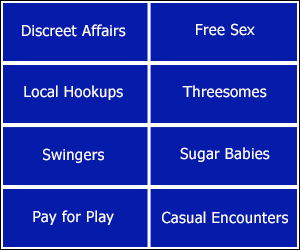I read customer reviews of strip clubs from around the U.S. Many customers are often surprised that many strip clubs are located in industrial areas, warehouse (not whorehouse) districts, and the like. From my experience as a long time strip club goer, and a career in city planning, with much of that time working in zoning, I can explain this.
Beginning in the early 1990’s, once lap dancing became popular (at least in the part of the U.S. where I’m from), strip clubs began to proliferate. Cities and counties, having to deal with the massive influx of this type of adult business, felt the need to apply regulations to limit where new adult businesses can be located. Public outcries at planning commission and city council meetings prompted that action be taken by public officials.
Around this time, three methods began to come into common use to regulate the location of strip clubs. Mostly, they attempted to keep them away from places where they would be regularly seen by children. One of the three methods was to limit their location to industrially zoned areas. This would keep strip clubs and adult businesses away from schools, churches, parks, residences and other “sensitive “ land uses that could be perceived as in conflict with adult businesses. Many strip clubs that opened since the early 1990’s were built in these areas.
With a background in zoning, I’m keenly aware of the zoning of an area as I enter it. I don’t need to consult a zoning map. It does look strange to those unfamiliar with this procedure, to find a strip club in a neighborhood of machine shops, various fabrication businesses, chemical suppliers, and such, and in austere-looking buildings, located away from an arterial street. Many clubs have had to succumb to this method if they want to locate in a certain jurisdiction. The clubs located in these areas may have the need to advertise more than the others, because they don’t get the drive-by traffic that strip clubs located on arterial streets have in commercial areas.
The next time you go to a strip club that appears to be in an unusual part of town, it may be because it’s an industrial zone.


From what I've seen, it's not that SCs are required to be located in industrial zones, but rather that they cannot be located within a certain distance of parks, churches, schools, residential areas, etc. With those restrictions, industrial zones end up being the only places SCs can be. In San Diego, if you have a strip club (or any adult business), and then someone else opens/builds a certain kind of use within 1000 feet, you will have to close down after 5 years.